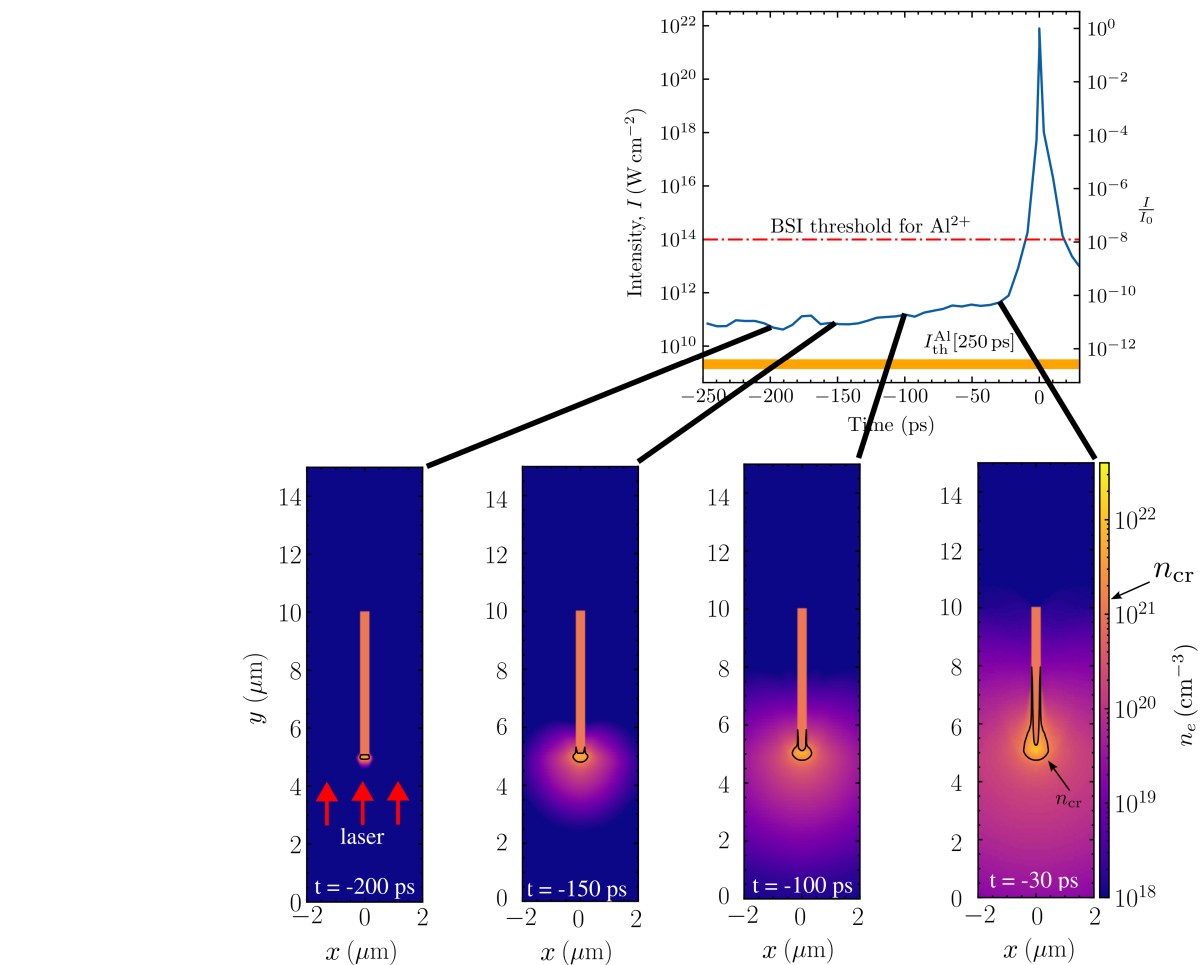J. F. Ong, A. Zubarev, A. C. Berceanu, M. Cuzminschi, O. Tesileanu [ https://www.nature.com/articles/s41598-023-48090-9 ]
A team of researchers from ELI-NP have made progress in understanding the behavior of nanostructured targets when irradiated by high-power lasers. Their findings, published in Scientific Reports, reveal the implosion of nanowires under the influence of laser amplified spontaneous emission (ASE) pedestals, providing insights for future experiments in laser-driven particle acceleration.
Radial compression
Nanowire array targets exhibit high optical absorption when interacting with short, intense laser pulses, leading to enhanced particle acceleration. However, these interactions are highly sensitive to the laser prepulse and can be significantly affected.Radiation hydrodynamics simulations using the FLASH code have shown that an array of aligned aluminum nanowires undergoes implosion when irradiated by the Amplified Spontaneous Emission (ASE) pedestal of a 1 PW laser with an intensity on the order of 1011 W/cm2. In particular, the electron density profile is radially compressed at the nanowire tips by the rocket-like propulsion of the ablated plasma.
Mass density compression
The mass density compression increases up to 2.9 times the initial density when a nanowire array with more nanowires per unit surface is used, due to the additional ablation pressure from neighboring nanowires. This pronounced compression occurs for nanowires located at the center of the laser focal spot when irradiated with a 500 ps ASE pedestal.These findings provide valuable insights for selecting appropriate target designs in experiments aimed at optimizing accelerated particle production using high-power lasers on nanostructured targets. Understanding and mitigating the effects of the ASE prepulse is crucial for maximizing the performance of these advanced particle acceleration schemes.
https://doi.org/10.1016/j.scib.2024.08.040

Fig. 1: Illustration of a nanowire array irradiatiated by a high-power laser. The temporal profile of the laser beam is showing the Amplified Spontaneous Emission (ASE) pedestal, ramp and main pulse regions. Adapted from J. F. Ong et al., Sci. Rep. 13, 20699 (2023).



